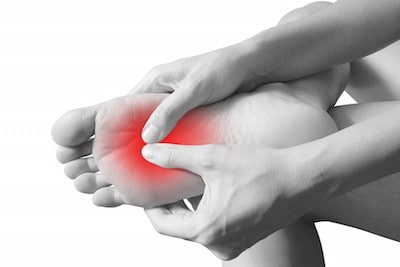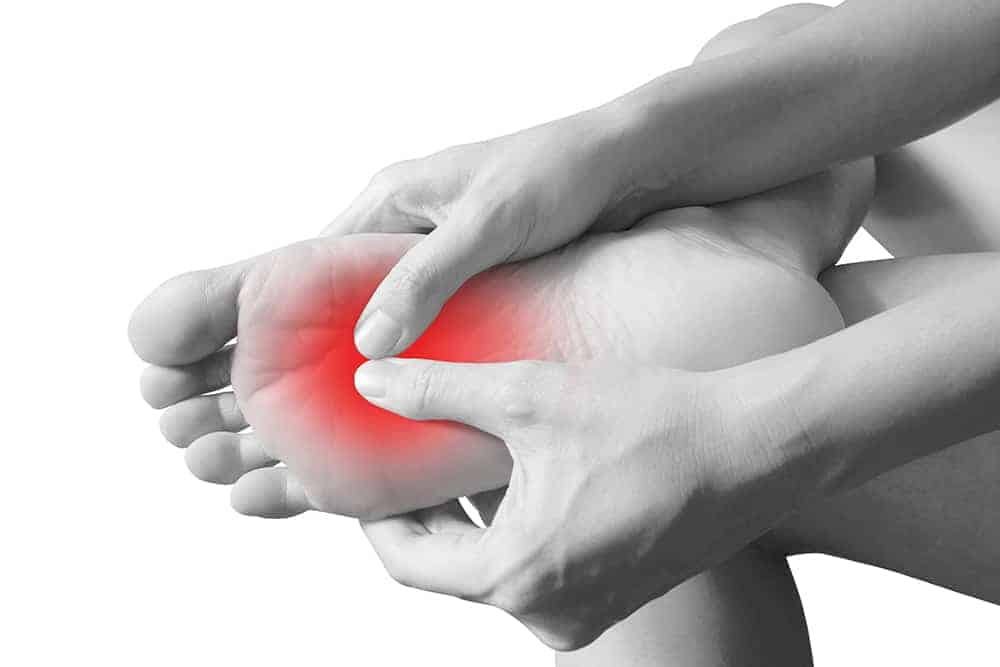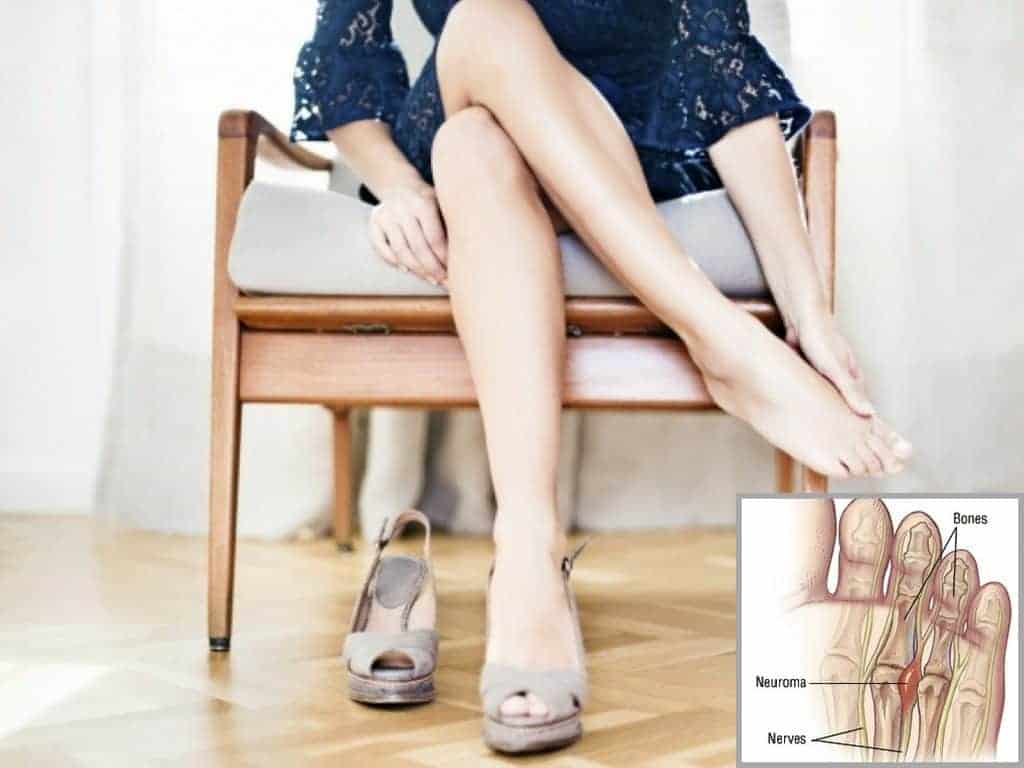
Morten’s neuroma Vs plantar plate

Morten’s neuroma Vs plantar plate
If you’ve ever suffered from pain in the ball of your foot you’ll know only too well how annoying and debilitating it can be. However, addressing the cause of the pain starts with the right diagnosis.
Two widespread causes of forefoot pain are Morten’s neuroma and plantar plate trauma. While plantar plate tears are less well known and identified, they are clinically prolific.
Morten’s neuroma
A Morten’s neuroma is a nerve injury. The joints around the metatarsal bones rub together causing irritation and swelling, which encroaches on the nerves. The nerves can become damaged and thickened resulting in the shooting, stabbing pain and burning sensation linked with a Morten’s neuroma.
The nerves in the intermetatarsal spaces (between the 2nd-3rd and 3rd-4th toes) are most commonly affected leading to pain in the ball of the foot.
Symptoms of Morten’s neuroma
- A sharp, shooting pain in the ball of the foot (usually between third and fourth toe)
- A burning pain in the ball of the foot that may spread or shoot down towards the toes
- Toes may feel numb or tingle
- Pain is intensified when wearing tight shoes or high heels

Podiatrist and founder of A Step Ahead Foot + Ankle Care Dr Brenden Brown explains, “Wearing high heels or tight fashion shoes compresses the nerve and creates that electric, shooting pain.
“People with foot deformities, such as hammertoes, bunions, flat feet or high arches, are at higher risk of a Morten’s neuroma because these defects generally cause the foot to widen, making it more difficult to find shoes that aren’t tight.”
Treatment for a Morten’s neuroma
Treatment will depend on the severity of symptoms but first-line treatment options include:
- Appropriate footwear—avoid shoes that are narrow in the forefoot or tight in general
- Soft tissue rehabilitation — Soft tissue massage to the Morten’s region can provide some relief from the associated pain
- Soft cushioned orthotics with a metatarsal dome may help reduce pressure on the nerve
- Injections to reduce inflammation, such as cortisone or Prolotherapy
- Surgical opinion is required if conservative measures are unsuccessful

Plantar plate tear
This is the very start of clawed or hammer toes! A plantar plate injury involves the ligament and cartilage attached to the base of and between our toe bones (phalanges). Injury can involve tears, ruptures or distensions. Conservative treatment for this condition is highly effective.
Symptoms of plantar plate tear
- Dull ache or sharp pain under the ball of the foot
- A “V” sign where the toes separate and form a V shape
- Toe lifts upwards (commonly the 2nd or 3rd toe) and may become swollen
- In acute cases the toe becomes thickened or enlarged. Often described as “sausage like”
- Feeling that you have a small stone in your shoe when walking
- The feeling that there’s insufficient cushioning between the toe bones and the ground
- Small amount of callous develops under the metatarsal heads
- Surgical opinion is required if conservative measures are unsuccessful
Treatment for plantar plate tear
- Conservative treatment for this condition is highly effective if caught within the first 6 – 12 months
- Wearing firm, stiff-soled shoe can help alleviate pressure on the joint and reduce the pain
- Cushioned orthotics with a metatarsal dome (often recommended by orthopaedic surgeons)
- Soft tissue rehabilitation, deep connective tissue therapies to the joint capsules and the spaces around this area.
- Deep connective tissue therapies to the extensor and flexor tendons and muscles of the foot
- Serial strapping or taping to prevent the toes popping up or hold them in alignment
Dr Brenden says, “For years Morten’s neuroma has widely been the most common diagnosis for forefoot pain. Yet I find that in many cases, where there is a dull ache type of pain in the ball of the foot, the cause is a plantar plate tear rather than Morten’s neuroma.”
Radiology
Morten’s neuroma and plantar plate trauma are difficult to distinguish between on diagnostic ultrasound.
“When viewed in ultrasound the two conditions without further discovery and without an experienced radiologist can appear the same. The two conditions will often return a hypoechoic mass finding, hence the need for more detailed clinical symptoms and signs accompanying the request.
“Given that the difference in symptomatology between the two is often the key, clinical symptomatology should be included in the radiological request,” advises Dr Brenden.
Related articles
4 hacks to staying injury free this winter sports season
5 hacks to keep ingrown toenails at bay
Your guide to sock solid ankle stability
About us
A Step Ahead Foot + Ankle Care is one of Sydney’s leading foot and ankle clinics. Principal podiatrist and founder of A Step Ahead Dr Brenden Brown (AKA Dr Foot) has been taking care of people’s feet for more than 20 years.
With a background in sports medicine and having served as a former president of the Australasian Podiatry Council, Brenden is a wealth of information when it comes to foot and ankle care.




 Dr Brenden’s White paper report on the “6 Reasons You Won’t Beat Heal Pain” outlines what’s stopping you from beating this and tips on how to stop it in its tracks!
Dr Brenden’s White paper report on the “6 Reasons You Won’t Beat Heal Pain” outlines what’s stopping you from beating this and tips on how to stop it in its tracks!